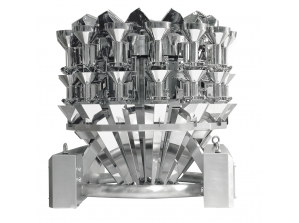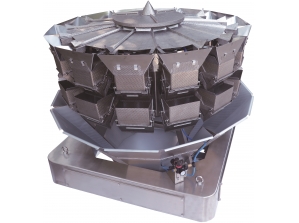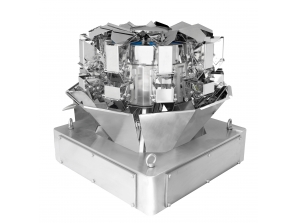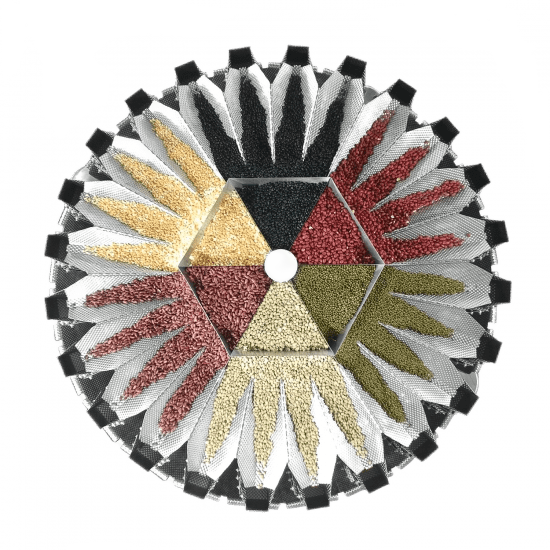- Transform Your Fishing Skills with the Exciting Big Bass Bonanza Strategy
- Understanding the Biology of Bass
- Lifecycle of Bass
- Impact of Water Conditions
- Essential Gear for Big Bass Fishing
- Choosing Lures Wisely
- The Importance of Technique
- Weather Patterns and Bass Activity
- Seasonal Changes and Strategies
- Finding the Right Spots
- Tips from Experienced Anglers
- Embracing the Conservation Message
- The Role of Education in Conservation
- Long-Term Benefits of Sustainable Fishing
- Conclusion
Transform Your Fishing Skills with the Exciting Big Bass Bonanza Strategy
For both novice anglers and seasoned pros, understanding the nuances of bass fishing can elevate the experience from a mere pastime to an exhilarating adventure. Among the various strategies available to improve one’s fishing skills, the Big Bass Bonanza optimization method stands out, combining strategy, technique, and a dash of luck. It introduces a framework that emphasizes both preparation and execution, unlocking new levels of success on the water.
The Big Bass Bonanza strategy involves not just bait and tackle, but a comprehensive approach, nuanced tactics, and knowledge of aquatic environments that can lead to better bass catches. By familiarizing ourselves with the biological and behavioral patterns of bass, along with the environmental factors that affect them, we can position ourselves at the apex of our fishing game. This article delves deep into the various aspects of the Big Bass Bonanza approach, offering practical insights and actionable tips.
In the upcoming sections, we will explore vital strategies, equipment recommendations, and expert advice to ensure that your fishing trips are not only fruitful but also enjoyable. Whether you’re heading out to your favorite lake or exploring a new river, understanding the essentials of the Big Bass Bonanza strategy is critical. Let’s cast our line and reel in some valuable knowledge!
Understanding the Biology of Bass
Before diving into the specifics of the Big Bass Bonanza strategy, it’s crucial to grasp the biology of bass. Understanding their lifecycle, feeding patterns, and habitat preferences can significantly increase your chances of landing a big catch. Bass are predominantly found in freshwater lakes, rivers, and reservoirs, making them accessible to many anglers. As opportunistic feeders, they are drawn to various baits depending on the season and their biological needs.
In terms of biological classification, bass belong to the family Centrarchidae, which includes different species such as the largemouth bass, smallmouth bass, and spotted bass. Their feeding habits vary with age and season, which is why knowing when and where to fish can optimize your experience.
| Largemouth Bass | Lakes, ponds | Shad, crayfish | Morning, evening |
| Smallmouth Bass | Rivers, rocky lakes | Insects, minnows | Midday, cooler days |
| Spotted Bass | Lakes, reservoirs | Shad, fish | All day in summer |
With these biological insights, you can tailor your strategies effectively. Knowing what attracts bass and when they are most active can significantly influence your fishing results. Additionally, factors such as water temperature and clarity also play critical roles in determining where and how to fish.
Lifecycle of Bass
The lifecycle of bass is an essential factor to consider when planning your fishing trips. Bass generally go through various stages, starting from eggs to fry, then juvenile, and eventually to adults. Each of these stages presents different opportunities for anglers. During the spawning season, which usually occurs in spring, bass become particularly aggressive, making this an ideal time for fishermen.
Understanding the spawning process is key. Bass typically nest in shallow waters where they can guard their eggs. This is the time when they are most susceptible to baits, making it a prime opportunity for fishermen to employ specific techniques designed for these times.
Moreover, recognizing how the seasons affect bass behavior can also greatly enhance your fishing skills. Each season influences their feeding habits, reproductive cycles, and movement patterns.
Impact of Water Conditions
Water conditions can significantly alter bass activity and location. Salinity, temperature, and clarity all contribute to the overall environment in which bass live. For instance, bass tend to thrive in warmer waters during summer, leading them to seek cooler areas during hot days. Understanding these environmental factors allows anglers to adjust their approaches effectively.
Water clarity is another critical element. Clear water generally requires different strategies compared to stained or muddy waters. In clear conditions, bass may become more cautious and require stealth and finesse, while in murky waters, louder and more vibrant lures may entice them better.
Ultimately, adapting your fishing tactics according to water conditions will require observation and adaptability. The more you learn about your fishing environment, the better equipped you’ll be.
Essential Gear for Big Bass Fishing
To embark on your Big Bass Bonanza fishing excursion, selecting the right gear is pivotal. Equip yourself with the right rods, reels, lines, and lures designed specifically for bass fishing. An ideal setup would not only maximize your catching ability but also ensure that your fishing experience is enjoyable and productive.
When it comes to rods, a medium-heavy to heavy action rod is recommended, providing the strength required to handle larger bass and the sensitivity to feel subtle bites. Pairing this with a quality baitcasting reel can enhance your control during retrieval and placement of lures in challenging conditions.
Additionally, selecting the right fishing line is crucial. Monofilament, braid, or fluorocarbon lines each have their advantages and should be chosen based on personal preference and fishing conditions. The use of various lures—ranging from soft plastics to topwater baits—can also make a significant difference, depending on the bass’s feeding patterns at the time.
- Rod and Reel: Medium-heavy action rod with a reliable baitcast reel.
- Line: Braid or fluorocarbon line for stealth and durability.
- Lures: A variety of lures, including crankbaits, jigs, and topwater models.
- Accessories: A tackle box filled with various baits and tools.
- Clothing: Weather-appropriate clothing for comfort during long outings.
By using appropriate gear, anglers will equip themselves with the best tools for success, ensuring that every Big Bass Bonanza trip is met with high expectations and substantial results.
Choosing Lures Wisely
The selection of lures is a strategic component of the Big Bass Bonanza methodology. Different lures can evoke distinct reactions from bass, depending on conditions and bass behavior. Soft plastics, crankbaits, and spinnerbaits all play specific roles and should be utilized strategically based on the time of year and fishing conditions.
Soft plastics are especially versatile, allowing anglers the ability to mimic natural bait movements. The action of these lures can entice even the most wary bass. Crankbaits, on the other hand, are ideal for covering large areas quickly, making them efficient for locating aggressive fish. Remember to adapt your lure selection throughout the seasons to align with bass movements and feeding habits.
Moreover, experimenting with colors and sizes can yield impressive results. Various bass species respond to different patterns, so a little trial and error can enhance your winning strategy significantly.
The Importance of Technique
Mastering your fishing technique is essential to executing the Big Bass Bonanza strategy effectively. Whether you prefer trolling, flipping, or pitching, the technique should align with the fishing environment and your equipment. Understanding when to switch techniques is critical and can be the difference between a productive outing and a frustrating experience.
For instance, pitching is ideal for targeting specific structures like docks or submerged brush, while trolling can help cover large water areas, ideal for locating schools of active bass. Each technique requires unique casting and retrieving methods, making practice essential.
Don’t underestimate the importance of patience and persistence. Many successful bass anglers spend hours perfecting their techniques and adjusting their approaches until they find what works best on the water.
Weather Patterns and Bass Activity
Weather plays an integral role in the effectiveness of your Big Bass Bonanza strategy. Identifying and analyzing weather patterns can inform you when to fish and what techniques to deploy. Sunny, overcast, windy, or rainy conditions each produce different environmental cues for bass.
Typically, bass are more likely to be active during overcast skies or during the early mornings and late evenings. Conversely, during bright, sunny days, they may move to deeper waters or seek shelter among structures. Recognizing these patterns can greatly improve fishing outcomes.
Additionally, temperature changes can stimulate or reduce bass activity. A sudden rise or drop in water temperature can trigger feeding frenzies or lockjaw behavior, making these conditions critical to monitor while planning your fishing trips.
| Sunny | Low | Deep water lures |
| Overcast | High | Topwater and crankbaits |
| Windy | Moderate | Spinnerbaits and jigs |
Familiarizing yourself with weather trends over time can sharpen your skills further and enhance your decision-making when you are out on the water. Always be prepared for changing conditions, as they can present both challenges and opportunities.
Seasonal Changes and Strategies
Each season brings unique challenges and opportunities for bass fishing enthusiasts. Understanding how to adapt your strategies according to seasonal changes is a vital aspect of the Big Bass Bonanza strategy. In spring, bass are gearing up for spawning, making them more aggressive and responsive to various baits.
Summer demands a different approach, as fish tend to go deeper or seek shade during the hottest parts of the day. Transitioning to early morning or late evening fishing can yield better results during these warmer months. Autumn, with cooling temperatures, often sees active feeding behavior as bass prepare for winter.
Winter presents challenges but can also provide opportunities if you fish in deeper waters where bass are less active. Adapting your techniques and choices according to the season not only makes you a more versatile angler, but it significantly increases your chances of success.
Finding the Right Spots
Locating the best fishing spots is another essential element of a successful Big Bass Bonanza strategy. Although experience can inform your choices, utilizing modern technology can provide you with insights into underwater structures and hotspots that are otherwise hard to detect. GPS devices and fish finders have revolutionized the way anglers can navigate and identify ideal locations for bass fishing.
Additionally, familiarizing yourself with natural features such as submerged rocks, various plant life, and significant temperature patches can enhance your fishing efficiency. Exploring areas where birds are diving may indicate bait fish activity, suggesting a higher likelihood of finding bass in those nearby waters.
Engaging with other anglers and fishing communities can also provide valuable information about promising spots. Spending time talking with local touring companies or viewing recent fishing reports can yield excellent insight into the best locations.
Tips from Experienced Anglers
Learning from seasoned anglers can provide invaluable knowledge and insights that can improve your Big Bass Bonanza strategy quickly. Many individuals have spent years perfecting their fishing techniques and are often willing to share tips and tricks that can help newcomers succeed.
One effective approach is to attend regional fishing tournaments. These events not only offer the chance to learn from competitors but also allow for the sharing of experiences and tactics in real-time. Observing fellow anglers can help improve your technique and understanding of local waters.
Moreover, engaging with fishing clubs or online communities can provide a wealth of resources, including shared articles, videos, and webinars that cover a range of fishing topics specific to bass. By seeking out educational opportunities, you can continually enhance your skills.
- Learn from experienced anglers through hands-on experience.
- Attend fishing events and workshops to gain practical insights.
- Engage with local fishing clubs for resources and community support.
- Utilize online platforms to broaden your fishing knowledge.
- Regular practice and adaptation are key to becoming a successful angler.
Ultimately, continuous learning and adaptation are significant factors that can contribute to your success as you embrace the Big Bass Bonanza methodology. Listening to those who have succeeded before you can pave the way for your journey.
Embracing the Conservation Message
A core aspect of responsible angling involves embracing conservation efforts, ensuring that our bass populations continue to thrive for future generations. As part of the Big Bass Bonanza strategy, anglers should consider fishing sustainably and ethically.
Practicing catch and release is crucial in maintaining healthy fish populations. By carefully handling fish and returning them to the water promptly, anglers contribute to the ongoing health of local ecosystems. This practice allows others to enjoy the thrill of catching larger fish while sustaining robust populations within our natural waters.
Engaging with programs that promote clean waterways and habitats also adds value to the fishing community. Supporting local conservation efforts and participating in clean-up initiatives ensures that we protect the environments in which we fish, helping to foster healthier bass populations.
The Role of Education in Conservation
Educating fellow anglers about sustainable practice is a profound way to contribute to conservation efforts. Many newcomers may not realize the effects of their actions on fish populations and ecosystems. Leading by example and sharing knowledge can create a ripple effect within the fishing community.
Offering workshops or instructional sessions on responsible fishing techniques can spread the conservation message effectively. Raising awareness about the importance of protecting habitats will encourage others to engage in sustainable practices.
In addition to in-person efforts, using social media platforms to promote conservation messages and share methods users can employ to protect ecosystems is essential. The more individuals who engage with these messages, the more impact it can have on sustaining angling opportunities.
Long-Term Benefits of Sustainable Fishing
Adopting sustainable fishing practices benefits not only individual anglers but the broader community as well. Healthy fish populations ensure that our waters can continue to provide thrilling experiences for generations of anglers to come. When we commit to sustainability, we embrace a thriving fishing culture that values responsibility and respect for nature.
Ultimately, the Big Bass Bonanza strategy underlines the importance of community engagement and ensuring environmental stewardship. As we progress in our angling journey, let us always be mindful of our impact and work towards preserving the natural beauty that brings us so much joy.
Conclusion
The Big Bass Bonanza strategy represents a multifaceted approach to bass fishing, incorporating essential biology, gear selection, technique mastery, weather considerations, and conservation awareness. By diving deep into these elements, anglers can maximize their chances of success while enjoying a fulfilling outdoor experience. Embracing this strategy not only boosts fishing skills but also fosters a culture of responsibility within the angling community. With dedication, practice, and a commitment to sustainability, every fishing trip can lead to remarkable adventures and cherished memories.




